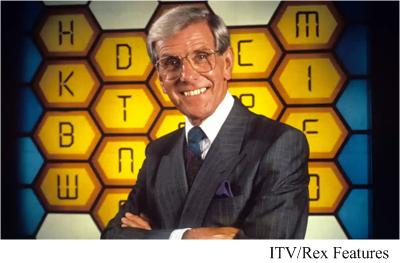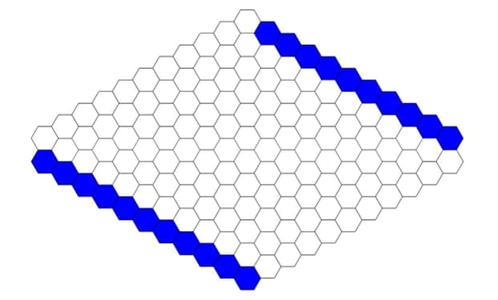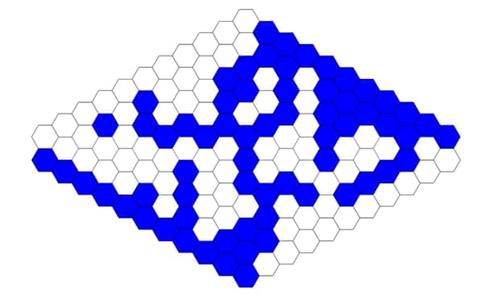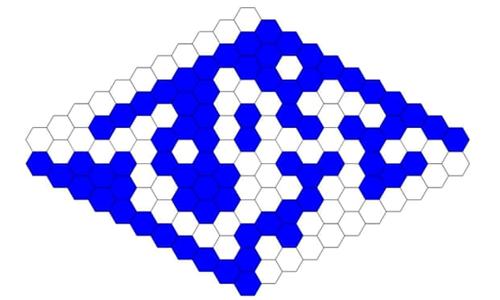 For his Monday Puzzle in the Guardian Alex Bellos provided a seemingly impossible puzzle from the 1983 British teenager quiz show Blockbusters.
For his Monday Puzzle in the Guardian Alex Bellos provided a seemingly impossible puzzle from the 1983 British teenager quiz show Blockbusters.
“In the much-missed student quiz show Blockbusters, teenagers would ask host Bob Holness for a letter from a hexagonal grid. How we laughed when a contestant asked for a P! Holness would reply with a question in the following style: What P is an area of cutting edge mathematical research and also a process in the making of an espresso? The answer is the subject of today’s puzzle: percolation.
Today’s perplexing percolation poser concerns the following Blockbusters-style hexagonal grid:

The grid above shows a 10×10 hexagonal tiling of a rhombus (i.e. a diamond shape), plus an outer row that demarcates the boundary of the rhombus. The boundary row on the top right and the bottom left are coloured blue, while the boundary row on the top left and the bottom right are white.
If we colour each hexagon in the rhombus either blue or white, one of two things can happen. Either there is a path of blue hexagons that connects the blue boundaries, such as here:

Or there is no path of blue hexagons that connects the blue boundaries, such as here:

There are 100 hexagons in the rhombus. Since each of these hexagons can be either white or blue, the total number of possible configurations of white and blue hexagons in the rhombus is 2 x 2 x … x 2 one hundred times, or 2100, which is about 1,000,000,000,000,000,000,000,000,000,000.
In how many of these configurations is there a path of blue hexagons that connects the blue boundaries?
The answer requires a simple insight. Indeed, it is the insight on which the quiz show Blockbusters relied.
For clarification: a path of hexagons means a sequence of adjacent hexagons that are the same colour.”
See the Blockbusters Problem for solution.
